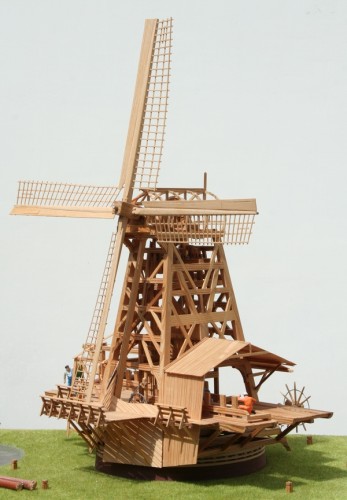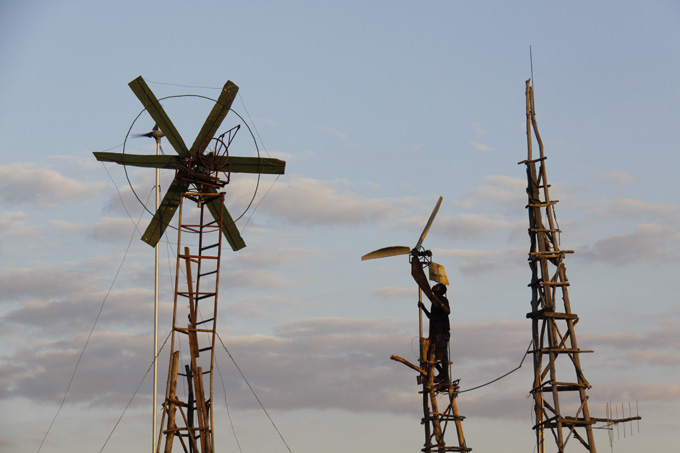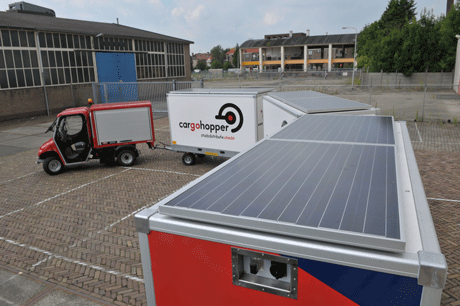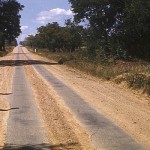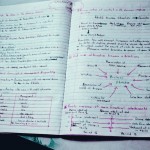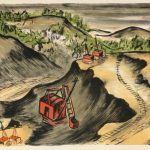“The gravity ropeway is an inexpensive and simple means of transportation. It operates by gravitational force without the use of external power. The gravity ropeway consists of two trolleys which roll on support tracks. These are attached to a control cable in the middle which moves in a traditional flywheel system. When the loaded trolley at the up-station is pulled downward by the force of gravity, the other trolley at the bottom-station is pulled up automatically by means of the control cable.
In principal the goods coming downward from the up-station must to be thrice as heavy as the up-going load. The sliding down of the trolley and its speed depends upon the angle of elevation made by the cables installed with the horizontal ground.
A flywheel with bearing and bracket is used as a brake to control the landing speed of the trolley at the bottom-station. Communication between top and bottom stations is done by tapping the wire rope. The operator at the top-station strikes the wire rope with a stick to send a wave signal through the wire rope to the operator at the down-station. The operator at the down-station then applies the hand brake to control the flywheel.”
Read more (building plans included). In-depth article: “Aerial ropeways: automatic cargo transport for a bargain“. Related: Water powered cable trains & (for those lacking mountains) Electric road trains 1901-1950.
